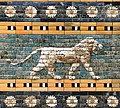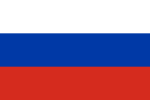 | Forest in Turkey (redirect from Forest in Anatolia) pollen and charcoal.: 214 From 10000 BC onwards oak increased in Central Anatolia, but after 4000 BC they were almost all cut down, such as for fuel and... 27 KB (2,724 words) - 03:18, 25 April 2024 |
 | Göbekli Tepe (category Archaeological sites in Southeastern Anatolia) or Xirabreşkê) is a Neolithic archaeological site in the Southeastern Anatolia Region of Turkey. The settlement was inhabited from c. 9500 to at least... 74 KB (8,074 words) - 16:19, 19 April 2024 |
 | after a heavy frost. Kale originated in the eastern Mediterranean and Anatolia, where it was cultivated for food beginning by 2000 BCE at the latest.... 24 KB (2,330 words) - 03:38, 16 April 2024 |
archaeology, Organic Residue Analysis (ORA) refers to the study of micro-remains trapped in or adhered to artifacts from the past. These organic residues... 65 KB (7,607 words) - 21:14, 29 March 2024 |
 | Gordion (category Archaeological sites in Central Anatolia) example in Anatolia. Around the same time, c. 850 BCE, Tumulus W was constructed, the first known example of a tumulus burial in Anatolia and a marker... 38 KB (4,331 words) - 19:30, 23 December 2023 |
 | Fermentation is a metabolic process that produces chemical changes in organic substances through the action of enzymes. In biochemistry, it is broadly... 42 KB (4,866 words) - 20:53, 7 April 2024 |
power vacuum in Anatolia, the Allies persuaded Greek Prime Minister Eleftherios Venizelos to launch an expeditionary force into Anatolia and occupy Smyrna... 84 KB (8,288 words) - 22:32, 29 April 2024 |
 | south of the East European Plain, west of the Caucasus, and north of Anatolia. It is bounded by Bulgaria, Georgia, Romania, Russia, Turkey, and Ukraine... 115 KB (11,611 words) - 13:37, 29 April 2024 |
 | 10000 BC – earliest neolithic sanctuaries at Göbekli Tepe in southern Anatolia 9300 BC – first cultivating of wild emmer wheat in Netiv HaGdud and other... 45 KB (5,777 words) - 21:15, 25 April 2024 |
 | Pontic Greeks (category Ancient peoples of Anatolia) ethnically Greek group indigenous to the region of Pontus, in northeastern Anatolia (in Turkey). Many later migrated in various waves between the Ottoman conquest... 116 KB (11,855 words) - 05:59, 21 April 2024 |
 | Antioch of Pisidia (category Seleucid colonies in Anatolia) region because of its strategic position. Even the Persians, who conquered Anatolia in the 6th century BC and attempted to rule the area by dividing it into... 67 KB (10,225 words) - 23:17, 2 April 2024 |
 | in less arid regions, including Upper Mesopotamia, the Southern Levant, Anatolia and Iran, which had more continuous settlement. Eurasian tells date to... 21 KB (2,036 words) - 07:41, 29 April 2024 |
 | Abbasid Caliphate (category States in medieval Anatolia) minimal while the Byzantine Empire was fighting Abbasid rule in Syria and Anatolia, with focus shifting primarily to internal matters; Abbasid governors exerted... 154 KB (18,399 words) - 06:40, 19 April 2024 |
Hexachlorobenzene (category Persistent organic pollutants under the Stockholm Convention) Persistent Organic Pollutants. Hexachlorobenzene is a stable, white, crystalline chlorinated hydrocarbon. It is sparingly soluble in organic solvents such... 14 KB (1,545 words) - 21:35, 10 February 2024 |
 | Erdal, Y. S. (2006). "A pre-Columbian case of congenital syphilis from Anatolia (Nicaea, 13th century AD)". International Journal of Osteoarchaeology,... 98 KB (10,427 words) - 12:21, 21 April 2024 |
 | Lead mining occurred in Central Europe, Britain, the Balkans, Greece, Anatolia, and Hispania, the latter accounting for 40% of world production. Lead... 173 KB (18,915 words) - 02:19, 28 April 2024 |
 | Depas Amphikypellon (category Early Ceramics in Anatolia) DEPAS AMPHIKYPELLON FROM KÜLLÜOBA IN WESTERN CENTRAL ANATOLIA THROUGH GC-MS ANALYSIS OF ORGANIC RESIDUES". Mediterranean Archaeology and Archaeometry... 8 KB (926 words) - 10:52, 16 April 2024 |













